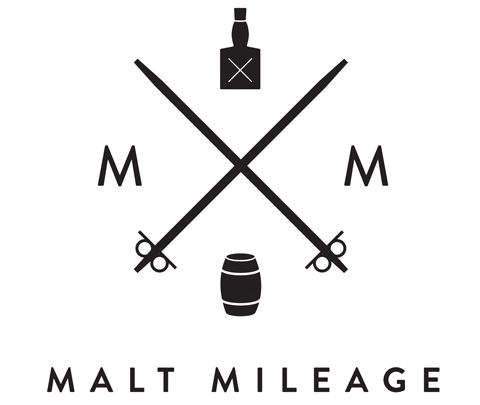Whisky has been produced in Australia for a very long time, and in fact in the 1890′s the illicit whisky production in the state of Victoria produced a whisky that was affectionately called “new milk” and “mountain dew”. For most of Australia’s history, whisky production was underground and illegal or seriously hindered by burdensome regulatory requirements. The early whisky trade in Australia resembles something from a wild west movie; with illicit stills, whisky smuggling, illegal moonshining and rugged gun slinging outlaw bushrangers.
Some of the booze that flowed out of early 1900’s Australian stills was thought to be of poor quality. Australian laws were then designed to crack down on illicit backyard moonshiners who were making much of the nasty whisky. Though, one thinks, the temperance movement in Australia may have also had a part to play in attempts to rein in drinking.
The law also seemed to stifle entrepreneurship. There were few major producers of Australian whisky. One major producer of whisky in Australia was Corio. Corio was based in the city of Geelong within the state of Victoria and it opened in the late 1920’s. Older generations of Australians look back on Corio whisky with mixed emotions, though the whisky is before the time of most millennials. Corio ceased production decades ago in the late 1980’s.
The result was that hardly anyone was distilling whisky, at least legally and on a big scale. The law – specifically as provided by the Distillation Act 1901 (Cth) – required licensees to have large capacities that may simply have been unfeasible for smaller (or start-up) commercial ventures. The law was seen to be burdensome for businesses to comply with, so few people in Australia set out to make money from making and selling whisky. The law was eventually changed.

In the 1990’s within the apple shaped island of Tasmania, the modern Australian whisky industry was being born. The Australian whisky industry, led by Bill Lark (known as the “godfather” of Australian whisky), refused to follow the Tasmanian Tiger to extinction. In 1992, about 150 years after the last licenced Tasmanian distillery closed its doors, Bill and Lyn Lark obtained their General Distiller’s Licence. The Lark Distillery commenced production, and other distilleries began to sprout mostly in Victoria and Tasmania.
Released from the shackles of previous regulation, Australian whisky producers now flourish. The trailblazers were followed by other whisky producers and the rest is history. Now, we can all start to enjoy the magnificent whisky that is flowing out of Tasmania, and, more generally, Australia.
Most of the whisky distilleries in Australia are located in Tasmania, and include Tasmania Distillery (Sullivan’s Cove), Old Hobart Distillery (OveReem), Hellyer’s Road, Nant and Belgrove. Victoria is home to Bakery Hill, New World Distillery (Starward) and Timboon, while Western Australia is home to the Limeburners brand of whisky. In tropical north Queensland, the Mt Uncle Distillery produces a single malt it has named The Big Black Cock whiskey (the head distiller tells me that the name came to him as he was woken by a rooster!).
The Australian whisky industry, now in boom times, is seeing an unprecedented increase in distilleries. Joining the ranks of Australian distilleries are Redlands Estate in Tasmania, Applewood distillery in South Australia, Archie Rose in Sydney, Whipper Snapper distillery in Western Australia, among others. It is hard to keep up!
Existing Australian distilleries are now spearheading a renaissance in Australian whisky making and rising from the ashes is whisky that many think is world class whisky; in 2014 Sullivan’s Cove French Oak won the honour of the world’s best single malt whisky in the World Whiskies Awards. Since then, Australian whisky has been in extremely high demand.
Australian whisky tends to be made in the Scottish tradition; that is, distilleries tend to distill spirit from a wash of malted barley and then age that spirit in used barrels that have previously held bourbon, sherry, Apera (Australian sherry), port, wine etc. There are exceptions. Belgrove make rye whisky while Whipper Snapper use a mash bill of corn, wheat and malted barley. The grain used in Australian whisky tends to be locally sourced, and this adds to the uniqueness of Australian whisky.
Australian whisky does not merely aim to replicate Scotch whisky. The warm and dry Australian climate may allow the spirit in oak barrels to draw out wood flavours more rapidly than in Scotland. A number of distilleries also use specific strains of barley and yeast to create distillate that has a certain character and flavour profile. Additionally, most Australian whisky is quite young and aged for less than 10 years (though, there are notable exceptions, including Hellyers Road and Sullivan’s Cove which each offer whisky aged at least 12 years).
Australian whisky reviews:
Other Australian whisky tasted:
- Three Capes Whisky by William McHenry & Sons (tasted May 2013) – tastes oak driven and unbalanced. NR.
- Hellyers Road Peated (tasted January 2013) – tastes youngish with overpowering peat. NR.
- Belgrove White Rye (tasted March 2013) – this new make spirit made from rye is well crafted and excellent, but at the end of the day it is new make. Worth a try for cocktails.
- New World Projects “Project X White Whisky” (tasted July 2016) – tasted raw and ethanol rich. Stripping the colour from this whisky (presumably through re-distillation?) seems to have also stripped it of some flavours, so the ethanol really seems to leap out on this one. NR.
- New World Projects Pedro Ximenez Cask # 2 (tasted July 2016) – tasted raisin and ripe fruit in this malt, but the wood influence seemed superficial. The whisky seemed to lack depth. NR.
- New World Projects Vatted Apera Refills (tasted July 2016) – tasted of muted fortified wine but amplified wood vanillas, tropical fruit, caramels and cereals. A decent dram, but, for me, nothing to write home about. NR.

